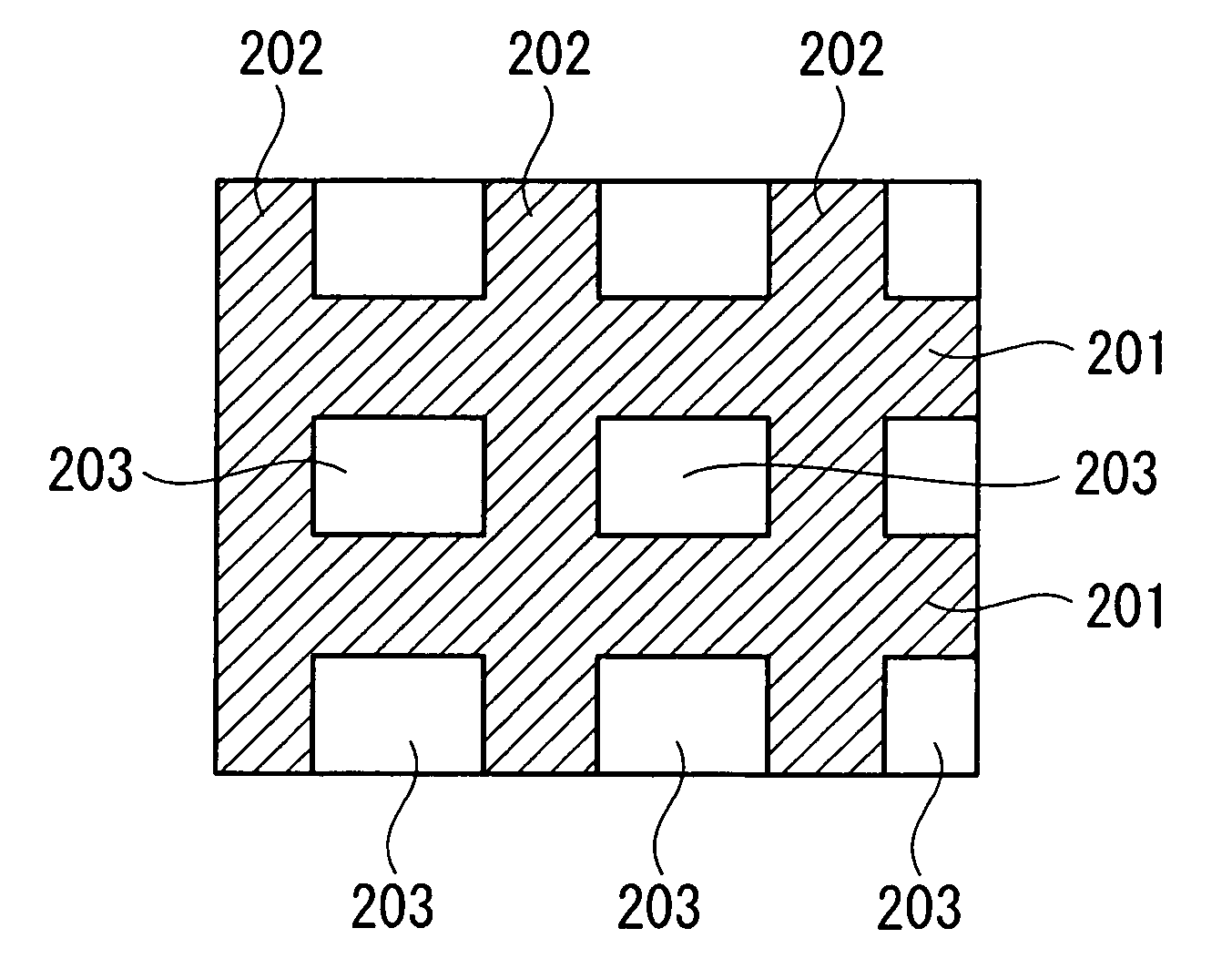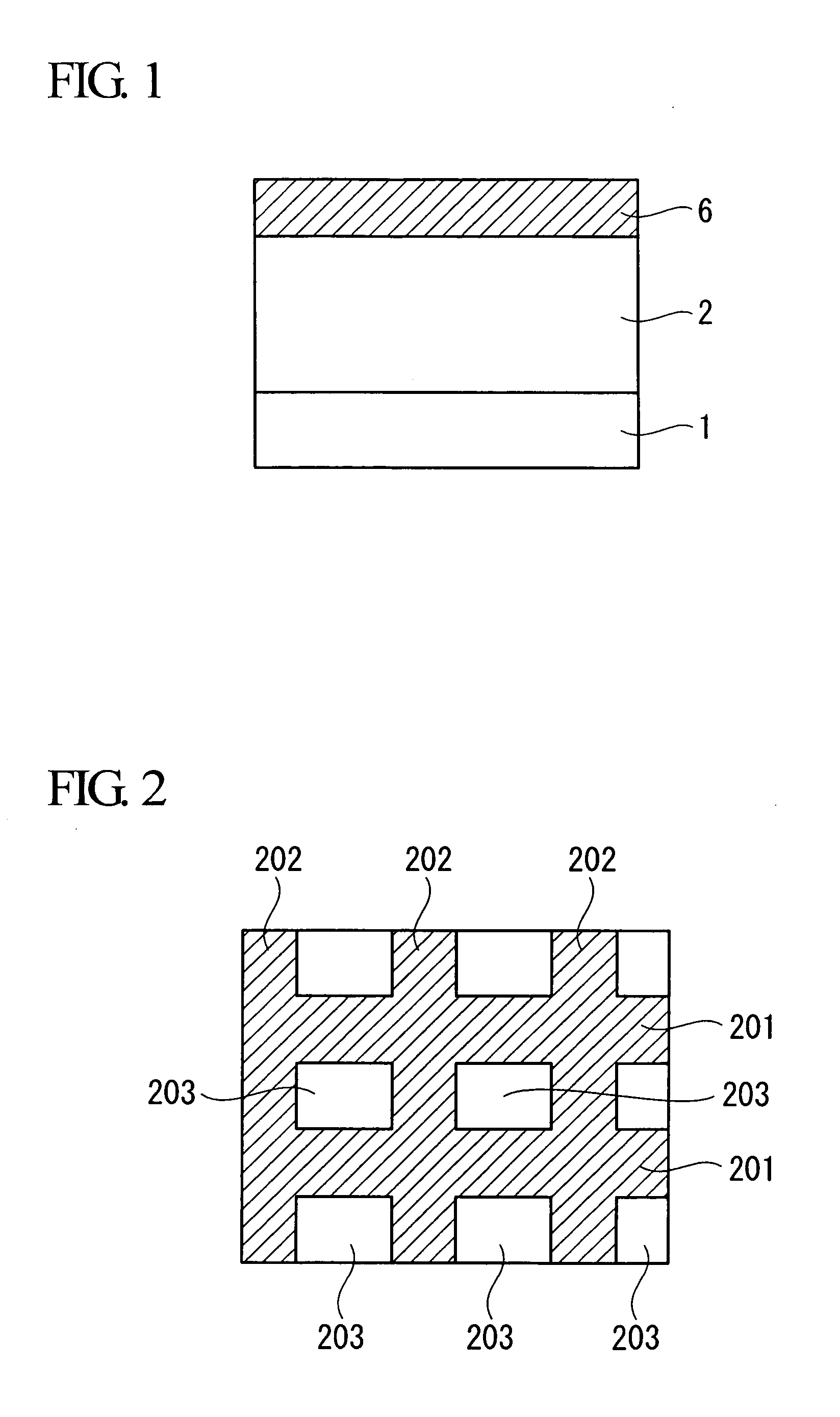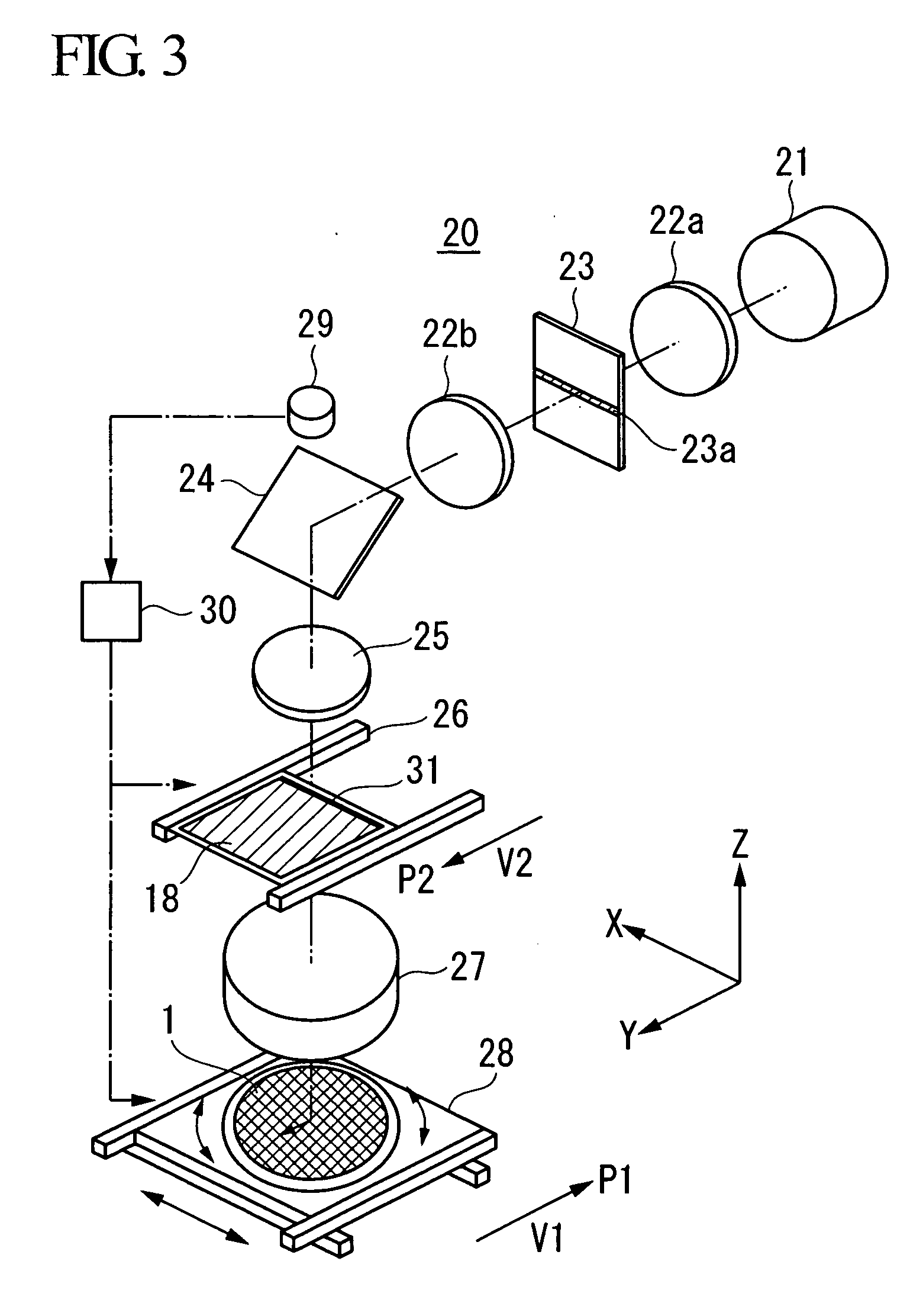Pattern forming method performing multiple exposure so that total amount of exposure exceeds threshold
a pattern and forming technology, applied in the field of pattern forming methods, can solve the problems of wiring degradation, limited range of exposure conditions, small margin, etc., and achieve the effect of low cost and easy forming
- Summary
- Abstract
- Description
- Claims
- Application Information
AI Technical Summary
Benefits of technology
Problems solved by technology
Method used
Image
Examples
concrete examples
[0176]A concrete example which was actually performed will be described below. In a preparatory process, a transistor structure as shown in FIG. 29 is formed on a semiconductor substrate, and capacitance contact plugs 90 are formed through the second inter-layer insulating film.
[0177]In the next step, a silicon nitride film is formed on the second inter-layer insulating film, and a cylinder inter-layer insulating film, which has a thickness of 2500 nm and is made of a silicon oxide film, is further formed thereon.
[0178]The cylinder inter-layer insulating film is formed by means of a PECVD (plasma-enhanced CVD) method using monosilane (SiH4) and nitrogen monoxide (N2O), or may be formed by a PECVD method using TEOS (Si(OC2H5)4) and oxygen (O2).
[0179]Next, deep-hole cylinders, each passing through the cylinder inter-layer insulating film and the silicon nitride film, are provided by means of photolithography and dry etching, so that the surface of each capacitance contact plug is expo...
PUM
| Property | Measurement | Unit |
|---|---|---|
| threshold | aaaaa | aaaaa |
| threshold | aaaaa | aaaaa |
| wavelength | aaaaa | aaaaa |
Abstract
Description
Claims
Application Information
 Login to View More
Login to View More - R&D
- Intellectual Property
- Life Sciences
- Materials
- Tech Scout
- Unparalleled Data Quality
- Higher Quality Content
- 60% Fewer Hallucinations
Browse by: Latest US Patents, China's latest patents, Technical Efficacy Thesaurus, Application Domain, Technology Topic, Popular Technical Reports.
© 2025 PatSnap. All rights reserved.Legal|Privacy policy|Modern Slavery Act Transparency Statement|Sitemap|About US| Contact US: help@patsnap.com



